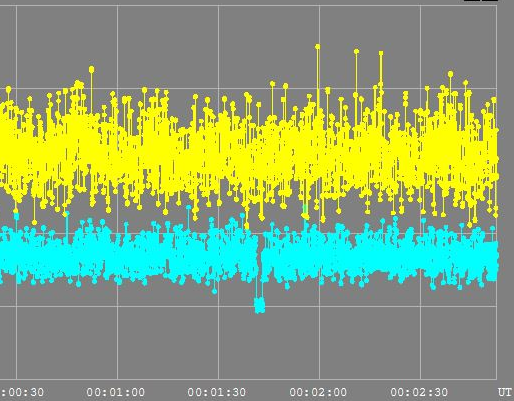
29P Occultation tips
2.
Telescope / Cameras / Timing.
1 ) Medium apertures suggested (8-12" typically)
2 ) Download and install Dimension
4 software or better the free Meinberg
software, and use it to sync the laptop clock from NTP before and after recording.
( Regular occultation observers will already have GPS timing systems, but NTP
is a good alternative.)
3 ) If possible use a focal reducer. This usually applies to SCT. Its important
to get at least one other star in the frame.
4 ) Use an exposure between 0.1 and 0.3 sec. The shorter the better, but this
will depend on your telescope and sky clarity. Use 0.5 sec if part cloudy.
5 ) Record format as SER or FITS files with frame time stamps switched on (e.g.
with SharpCap
)
6
) For CMOS cameras and FITS files, some darks frames would be useful. ( x20).
Turn off the time stamp when taking darks after the observation.
7 ) For SER, take a dark SER as in (6) - sequence length about 10 sec.
8 ) Observe/record for a minimum
of 2 min around the predicted mid time of 22:43:15
s. UT (Mid time +/- 1 min)
9 ) Use a clear filter, or no filter.
3. Recording
1) Analogue (8-bit) video is saved to HD with a
USB-2-digital
converter (e.g. Pinnacle) and recording software VirtualDub
, SharpCap or IOTA_VideoCapture
2 ) USB3 cameras. Ideally use mono like ASI174,
QHY174. Use what you have with software VirtulDub, FireCapture or SharpCap.
Check the on-frame time stamp is switched-on, although SER and FITS will record
the time in the meta data.
3) File Format
SER or FITS but FITS is preferred at 10 to 3fps. If you find the star too
faint, increase the exposure to 0.5 sec. (2 fps)
4 Reporting
and analysis
1) Play back the video and note the
approximate times of any events. A software analysis will be needed to extract
the exact times.[ Fig-4 ]
2) There is a free software tool (TANGRA)
to do this, otherwise send the file(s) to a coordinator for analysis (drop box,
wetransfer etc).
3) Negative result (no occultation) are as important as the positives. Please
report negatives or "unsure".
4) Contact the BAA Asteroids and Remote Planets Section if you have a successful
recording.
Fig-4 Example of a light curve with a short duration disappearance (in blue) obtained with Tangra software. The yellow line is a brighter comparison star
